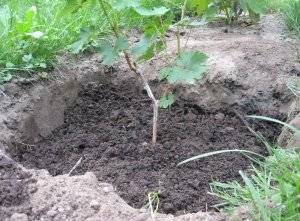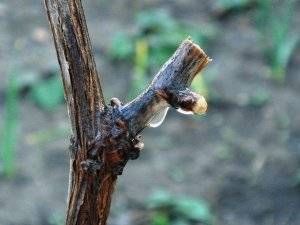Content
The Lancelot variety was bred by Novocherkassk breeders for cultivation in the northern regions. The grapes are resistant to harsh winters. The harvest can be stored and transported. The fruits are of particular value to merchants. The bunches retain their marketable appearance for a long time and are in demand on the market. A full description of the Lancelot grape variety, photos, reviews, videos, will help you better understand the characteristics of the crop, as well as the features of its cultivation.
Main features of the variety
A review of the description of the Lancelot grape variety must begin with its origin. The culture is a hybrid. Grapes obtained by crossing Gift to Zaporozhye, FV-3-1 and varieties Ecstasy. The result of selection was the early hybrid Lancelot, which produces a harvest approximately 130 days after the buds awaken.
The bush of the Lancelot variety is characterized by a spreading, vigorously growing vine. The flowers are bisexual, which promotes self-pollination. During the season, the vine manages to ripen almost its entire length.
The clusters grow large, conical in shape with tightly packed berries. Typically, the average hand weight varies from 0.9 to 1.3 kg. Good feeding allows you to increase the weight of the bunch up to 3 kg. The shape of the berries is cylindrical, turning into an oval. The weight of one fruit is about 14 g. The average berry length is 31 mm, width is 22 mm.The skin of Lancelot grapes is light green and turns white when ripe. In the sun, the berries get tanned.
The structure of the pulp is fleshy, the taste is sweet with a moderate presence of acid. When eating the berry, a honey aroma is felt. The skin is so strong that it does not crack when the soil is very waterlogged, however, when chewing the fruit, it is practically not felt.
The Lancelot variety is characterized by high unlimited yield. To reduce the load on the bush, some of the brushes are removed even before flowering begins. In winter, Lancelot grapes can withstand frosts down to -24OC. The variety is resistant to fungal diseases, but preventive measures must be taken.
A better video to help you recognize Lancelot grapes:
Positive and negative qualities of the variety
Having finished considering the description of the Lancelot grape variety, photos, reviews, it is worth summing up the presence of positive and negative qualities of the culture. The benefits include:
- excellent taste of berries;
- beautiful presentation of the bunches;
- large clusters, large berries;
- resistance to frost, fungal diseases and pests;
- the brushes can hang on the vine for a long time and can be stored and transported.
The greater density of berries on a bunch can be attributed to advantages and disadvantages. Due to the dense cluster of fruits, the clusters of the Lancelot variety do not wrinkle during transportation. However, this same density prevents the berries inside the bunch from ripening evenly.
Secrets of growing
If there is a desire to grow the Lancelot grape variety, then a sunny place is selected for the seedlings on the site. It is best to plant in the fall. Before winter, the Lancelot seedling will gain strength, take root and survive severe frosts. Spring planting time is dangerous due to night frosts. Affected young shoots on a seedling may not resume growth.
However, most gardeners recognize the spring planting of Lancelot grapes because of the 100% survival rate of the seedling. To protect against frost, a film shelter is erected at night. Agrofibre is breathable and can not be removed from the seedling even during the day. When the period of night cooling ends, the shelter is removed.
Autumn planting of Lancelot is carried out in mid-September. The weather outside should be warm around the clock. When purchasing planting material, Lancelot grape seedlings are selected about 50 cm long with mature buds and a large root. It is important to carefully examine the bark. There should be no signs of damage on the surface in the form of spots, dry areas, or areas chewed by pests. The root system of a Lancelot grape seedling is shortened with scissors to 15 cm, and then immersed in a liquid clay solution.
The site is prepared long before the grapes are planted. If the procedure is performed in the spring, then the soil and pits are prepared in the fall. When planting time falls in September, the site is prepared at least three months in advance, around the beginning of summer.
First, all the soil is dug up onto the bayonet of a shovel. Remove weed roots, debris, and stones. The Lancelot variety is characterized by strong bush growth. For normal development, a gap of 2–3 m is left between seedlings.A hole is dug to a depth of at least 80 cm. The width and length are approximately the same dimensions. The dug hole is loaded with a nutrient substrate consisting of:
- 2 buckets of humus;
- 3 buckets of peat;
- 2 kg of ash;
- 150 g of potassium and superphosphate;
- 2–3 buckets of fertile soil.
If the soil is too poor, the amount of organic matter is doubled. At the bottom of the pit, a drainage layer of stones, sand and earth is organized.
Before planting Lancelot grapes, the hole is prepared again. A small hill-shaped elevation is paved at the bottom. A seedling with roots soaked in clay is lowered into a hole, covered with earth, lightly tamped with hands, and then filled with a bucket of water. After the liquid is absorbed, the loose soil will settle. More soil is added to the hole, and mulch of straw or sawdust is covered on top.
Long shoots of the Lancelot seedling are shortened with pruning shears, leaving no more than 4 pieces. Before the onset of frost, the grapes will have time to spread roots in the ground and take root.
Features of care
The Lancelot variety, like other grapes, requires standard care procedures. From the beginning of April to the end of October, the bushes are regularly watered. The frequency depends on weather conditions. Water is poured under the root of the grapes. After the liquid is absorbed, the ground is loosened with a hoe to avoid the formation of a crust. Adding mulch gives good results. Straw, sawdust or peat prevent grass from growing, prevent moisture evaporation, and are also good organic fertilizers.
Mandatory watering of Lancelot grapes is carried out before flowering, as well as during the pouring of berries. At 1 m2 At least 50 liters of water are poured onto the ground. Lack of moisture during this period threatens the shedding of inflorescences and ovaries.About 3 weeks before harvesting, watering is completely stopped.
Preparing for wintering Lancelot similarly cannot be done without abundant watering. Amount of water per 1 m2 increase to 100 l. The abundance of moisture makes it possible for the vine to stock up on useful substances for the winter.
The Lancelot variety loves feeding, for which it thanks for its large clusters. Organic matter is considered the best fertilizer. Gardeners use rotted manure, humus, compost and add wood ash. Feeding grapes with mineral fertilizers containing potassium and phosphorus helps increase the sweetness and size of the berries. Young bushes of the Lancelot variety are fertilized monthly. Mature grapes are usually fed at the beginning and end of the season.
Under good weather conditions, Lancelot bunches will ripen in early September. The amount of harvest depends on care and climatic conditions. In the southern regions, up to 10 kg of grapes are harvested from a bush. For the central strip, a yield of up to 7 kg per bush is considered normal.
The Lancelot variety is considered frost-resistant, but in cold regions the vine is covered for the winter. The grape branches are removed from the trellis, tied with rope, and laid on boards or a bed of straw. The top of the vine is covered with dense material and covered with earth.
Before sheltering, the grapevine must be pruned. Lancelot bushes are vigorous and need to be shaped. The advantage of autumn pruning is that the procedure is less painful. By this time, sap flow slows down, and the grapes lose less nutrients. In spring, it is better to prune frozen and damaged shoots.
On young Lancelot bushes, 3–4 eyes are left on the vines. They do not give birth, but are used to form a bush. On mature grapes, lashes with 8 eyes are left.The bush forms from 3 to 8 fruiting sleeves. The maximum number of eyes on an adult grape is 35. It is not advisable to leave a larger quantity. Overloading the bush will only reduce the yield and deplete the vine.
Disease Prevention
A special feature of the Lancelot grape variety is its resistance to dangerous diseases: mildew and oidium. However, preventive measures should not be ignored. Before flowering, grape bushes are sprayed with a 1% solution of Bordeaux mixture.
Insects and birds pose no less danger to ripe berries. The tough skin of the berries makes it difficult for wasps, but they can chew it if they want. With the appearance of sweet juice, the fly flies together with the wasps. Traps made from plastic bottles help get rid of the enemy. Containers without stoppers are hung with ropes from a trellis, and sweet liquid is poured inside. The grapes are covered with nets from voracious birds.
The video provides an overview of Lancelot grapes:
Reviews
Experienced gardeners and simple summer residents leave a lot of reviews about Lancelot grapes on forums.















